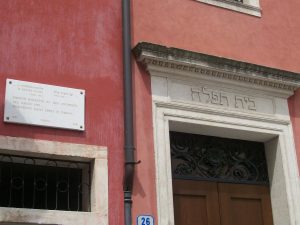FEATURES Padua, the Cradle of Italian Rabbis
Padua is a mid-sized city located in northeastern Italy, about 25 miles east of Venice. Around the year 1000 the first Jews arrived in Padua. Towards the mid-14th century, many Jews from around Italy, who practiced banking and the art of moneylending came to Padua at the invitation of the Carrera feudal lords. Padua was relatively liberal at the time, and generally accepting of Jews. Of course, the Carrera’s invited the Jews for a specific purpose, which was to develop Padua economically. In terms of banking, the city granted the Jews full freedom to engage in commerce and loan banking. In time the Jews of Padua established a synagogue and Jewish cemetery. By 1616 the Jewish population in Padua numbered 655 people and was increasing. Today the Jews of Padua number roughly 200.
By the 13th century Padua become part of the Venetian republic. This political maneuver led to a problem with the money lending business. The Venetian authorities believed it would be beneficial to lower interest rates on loans. This demand was met with the closing of money lending businesses throughout the city, a form of retaliation by the Jewish bankers in order to demonstrate their displeasure. The socio-economic situation got worse when the authorities suggested the further reduction of interest rates. Many Jewish bankers lost their rights to real estate ownership and commerce, and eventually in the late 1450s the businesses were eradicated from the city (though they were allowed to return after a couple years). The authorities expelled banks from the city again in the late 15th century in reaction to itinerant monks, who preached against money lending and doing business with Jews. This led to the creation of Christian Monte di Pietà banks, which made it much harder for Jews to do business.
In the early 17th century the authorities of the city implemented a law that essentially restricted the Jews to a single quarter or ghetto area. The isolation and exclusion of the Jews at the hands of the authorities contrasts with the relative integration of earlier centuries.
Even though the Jewish community of Padua experienced its share of problems, the city was chosen as the site of the Collegio Rabbinico Italiano in 1829: the first Jewish school of higher learning of its kind where secular and traditional religious studies were jointly taught. The collegio formed entire generations of Italian rabbis. The great Triestine rabbi and scholar Samuel David Luzzatto was professor of history, philosophy and Hebrew literature here from its founding until his death in 1865.
*Nicholas Oliveti is a student at Muhlenberg College (Allentown, Pennsylvania, USA).

